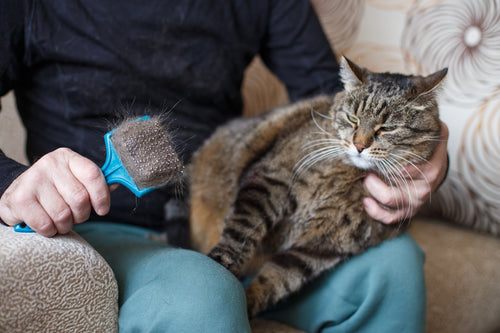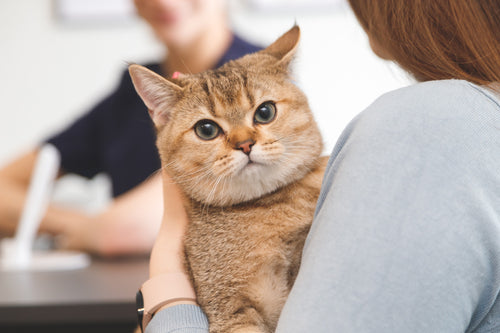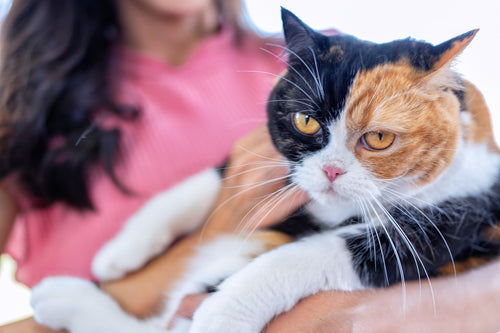The canine body is a uniquely powerful vehicle of effervescent joy and strength. However, at some point or another, aging will begin to show on your precious pup. The aging process affects all dogs in different ways. However, hip problems in older dogs are especially common.
When father time starts ticking away at your dog's hips, it is important to notice the symptoms and how to treat them. In this article, you are going to learn everything you need to know about hip discomfort in older dogs. Let's go!

Signs of Hip Problems in Older Dogs
Dogs are notoriously proud creatures. That is to say, when they are in discomfort it can sometimes be tricky to know. However, there are a few telltale signs of hip discomfort in our furry friends.
1. Sudden Changes in Behavior
Dogs are creatures of habit and sudden changes in their behavior may be an indication that they are experiencing discomfort. Therefore, it is always a good idea to know what your dog's baseline temperament is like.
Some questions to ask yourself:
- Is my dog more tired than usual?
- Does my dog act uncharacteristically aggressive towards me or other people?
- Is my dog uninterested in playing his favorite game of fetch or tug of war?
- Does my dog seem to be avoiding jumping or climbing?
If your answer is "yes" to one or more of these questions, your dog may be experiencing discomfort.

2. Difficulty Moving
Dogs experiencing discomfort will usually display visual signs of physical struggle. For example, your usually snuggly dog may opt to sleep on the floor instead of jumping up on the couch with you. Additionally, you may notice your dog having difficulty rising from a lying down position.
3. Increased Potty Accidents
When dogs are experiencing hip problems, the act of going on a walk outside may suddenly become a real struggle for them. Therefore, you may begin to notice your potty trained dog begin to have an increased number of accidents in the house to avoid going outside.
4. Bunny Hopping
You may notice your dog begin to "bunny hop". To demonstrate, this means your dog would simultaneously hop with both hind feet to get around.
This action is intended to evenly disperse the bodyweight. Thereby attempting to relieve the discomfort of putting all of their weight on one hip at a time.
This action is intended to evenly disperse the bodyweight. Thereby attempting to relieve the pain of putting all of their weight on one hip at a time.
5. Lameness or Limping
Another way to spot hip discomfort is limping. Also referred to as lameness, limping is an exaggerated walk in favor of one side. Similar to the bunny hop, this is the body’s way of protecting the part that is experiencing discomfort by putting less pressure on it.
Sometimes if a limb is lame, a dog will raise or bow their head when walking on that particular leg. You will also likely notice their stride to be shorter on the affected side.

6. Resistance to Touch
In the event a dog is experiencing discomfort, they will likely be incredibly adverse to touch. Even the most loving dog may growl, cower, snap, or cry when you try to pet them.
7. Excessive Licking
Have you heard the term "lick your wounds?" Well, dogs are the inspiration behind that phrase. Dogs are highly instinctual creatures and they lick their wounds to comfort and reduce their discomfort. Therefore, if your dog is excessively licking a certain area that doesn't appear injured on the outside, it may be a sign that they are hurting on the inside.
How to Manage Hip Problems in Older Dogs
As previously discussed, hip ailments in dogs are quite common. As a result, there are a variety of methods managing canine hip problems.
1. Natural Supplements
A holistic approach to wellness is becoming rapidly commonplace in today's society. This exciting development not only benefits us humans but our beloved dogs as well.
When it comes to bones and joints, the three big wigs of homeopathic healing are Glucosamine, Turmeric, and Vitamin C.
It is important to only provide your dog with joint supplements formulated specifically for dogs. In that regard, we suggest Pet Honesty's Advanced Hip and Joint glucosamine dog chews. These tasty chews are chock-full of joint healing ingredients (including the big 3!), vet formulated, and natural.
2. Diet and Exercise
Another approach to joint care is a healthy balance of diet and exercise. Excess weight puts an immense amount of strain on your dog's joints. If your dog is obese, talk to your vet about their personal recommendations for a healthy diet and exercise plan.

3. Physical Therapy
In addition to supplements and a healthy diet, there are several complementary therapeutic treatments available to dogs dealing with hip problems. Such as:
- Acupuncture
- Chiropractic care
- Hot and Cold Compresses
- Massage
That's right, Fido can get acupuncture.
4. Prescription Medications or Surgery
Particularly severe ailments may call for more drastic measures. Your vet may recommend canine joint medications. Veterinarians often prescribe steroids and prescription non-steroidal anti-inflammatory drugs (NSAIDs) for joint problems. However, keep in mind that these drugs can only alleviate the pain associated with joint discomfort - they do not actually cure the cause of the discomfort.
Hip Problem Prevention
No matter how old your dog is, proactive joint health is a vital component to their well-being. That being said, it is a good idea to take preventative measures when it comes to precious canine joints.
Green Lipped Mussels
Working joint supplements into your dog's health plan is a great place to start. In addition to the aforementioned "big 3", there is a new kid on the block making waves in the joint health game.
Green lipped mussels hail from crisp waters of New Zealand. This magical ingredient works on a genetic level to promote joint health. Green lipped mussels help prevent the growth of an enzyme called cyclooxygenase that is responsible for causing uncomfortable joint inflammation.
Pet Honesty has developed an amazing (and tasty!) supplement using the power of green lipped mussels, Turmeric, and glucosamine. Pure Mobility is natural and safe for dogs of all breeds and ages.

Protein is King
A nutrient-rich, protein-packed diet is essential to maintaining a healthy canine weight. Interestingly enough, dogs do not need carbohydrates in their diets. While humans need carbs to convert to energy, dogs use protein to make energy.
Many conventional dog foods are full of unnecessary fillers and lacking in vital protein. Not only do these foods pack on the pounds, but they leave your dog devoid of necessary nutrients. Consult your vet about your dog's diet and personal nutritional needs to find their perfect meal plan.
Fitness is Fun
Playing with your dog is one of the most fun parts of being a dog owner. Better yet, running and playing with your dog is an essential component of a healthy skeletal system. Healthy movement helps lubricate your dog's joints and prevent stiffening.
Hip Problems in Older Dogs: In Conclusion
Aging is completely natural, and hip problems in dogs are a fact of life. Fortunately, there are several natural ways to support joint health in your dear dog.
Talk to your vet today about your pup's ideal hip care plan.









